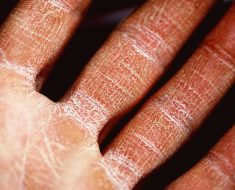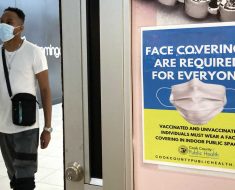Key Takeaway
-
The majority of cases of hepatocellular carcinoma (HCC) unrelated to hepatitis or cirrhosis occur in individuals with an intermediate degree of fibrosis. Efforts to tackle risk factors, such as obesity, diabetes, unhealthy alcohol use, and smoking, might be best targeted to those with an intermediate level of hepatic fibrosis as indicated by FIB-4.
Why This Matters
-
Hepatocellular carcinoma is the sixth-most common cancer worldwide and the third-most common cause of all cancer deaths in 2020. Rates are highest in Asia and Africa, but have doubled in the United States and Europe, possibly because of the prevalence of alcohol-related liver disease and nonalcoholic fatty liver disease, both of which drive HCC.
-
Yet, the current international screening guidelines for HCC focus exclusively on patients with cirrhosis or chronic hepatitis B.
-
The results of this study suggest that efforts to tackle HCC risk factors, such as obesity, type 2 diabetes, unhealthy alcohol use, and smoking, begin prior to the development of cirrhosis and be targeted at those with an intermediate level of hepatic fibrosis.
Study Design
-
The study included patients free of viral hepatitis and cirrhosis in the Department of Veteran Affairs (VA) healthcare system who were treated between October 1, 2007 and September 30, 2020. Information was gathered on patient age, sex, race/ethnicity, body mass index, diabetes, alcohol use, and smoking status.
-
The Fibrosis (FIB)-4 index score, a composite of aspartate transaminase and alanine transaminase levels, platelet count, and patient age, was calculated and stratified into <1.45 (low fibrosis risk), 1.45–3.25 (moderate fibrosis risk), and >3.25 (advanced fibrosis or cirrhosis).
Key Results
-
The final analysis included slightly more than 1 million patients (93% male, mean age 60 years). Of these, 46% were obese, 22.8% had diabetes, 19.8% had unhealthy alcohol use, and 31.6% were current smokers.
-
The majority (60.1%) had a low fibrosis risk on the FIB-4, 36% had a moderate risk, and 4% had advanced fibrosis or cirrhosis. Among 1567 patients with incidence HCC, 73.9% had a baseline FIB-4 ≤3.25, and 62% a score of 1.45–3.25, or moderate fibrosis risk.
-
Further analysis revealed that the association between clinical risk factors and HCC incidence varied by baseline FIB-4, with the largest hazard ratios for the associations between HCC and obesity, diabetes, unhealthy alcohol use, and current smoking seen in patients with FIB-4 1.45–3.25.
-
In the case of alcohol use disease, the hazard ratio for HCC was 1.91 in patients with FIB-4 <1.45, 2.99 in those with FIB-4 1.45–3.25, and 1.92 in patients with FIB >3.25.
Limitations
-
Study limitations included the predominantly middle-aged and older White population who are at greatest risk of developing HCC.
-
The observational nature of the study limits its ability to identify novel confounding variables.
-
The FIB-4 score increases with age and may overestimate fibrosis in patients with alcoholic liver disease.
Disclosures
-
The research reported was supported by the National Institutes of Health and the National Cancer Institute.
-
Joseph K. Lim reports research contracts with Yale University from Allergan, Conatus, Genfit, Gilead, and Intercept outside the submitted work. No other disclosures were reported.
This is a summary of a preprint research study published on SSRN on November 1. The first author was Ysabel C. Ilagan-Ying, MD, Yale School of Medicine, New Haven, Connecticut. A preprint is a preliminary version of a manuscript that has not yet been peer reviewed at a journal. The posting of a preprint on this server should not be interpreted as an endorsement of its validity or suitability for dissemination as established information or for guiding clinical practice.
The research reported was supported by the National Institutes of Health and the National Cancer Institute.
Ysabel C. Ilagan-Ying, MD, Kirsha S. Gordon, PhD, Janet Tate ScD, et al. “Hepatocellular Cancer in the Absence of Viral Hepatitis: Implications for Prevention,” November 1, 2021. Preprint
For more from Medscape Oncology, join us on Twitter and Facebook
Source: Read Full Article





